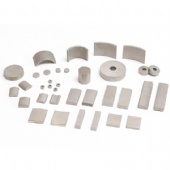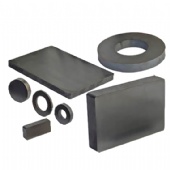Author:GeMeiGeDate:2024-11-25
Since the 19th Century, theory of magnetism has developed rapidly, and new magnetic materials are continuously being discovered. Permanent magnet has been widely applied to various areas as an important functional material. It could be argued that there can be no modern power industry, industrial automation, information industry without magnetic material. Permanent magnetic material, soft magnetic material, and magnetic record material is hailed as three primary magnetic material, then they constitute the huge family of magnetic material with magnetic refrigeration material, magnetostrictive material, magnetic absorbing material, and newly-developed spin-electronic material. Permanent magnetic material which also known as hard magnetic material, is the earliest applied magnetic technology to science. Chinese used lodestone to make compass as early as 300BC.
However, even if people have utilized magnetism of matter, human cognition to magnetism rose to the theoretical stage until 19th century and magnetism began to develop rapidly.
1820: Danish physicist Hans Christian Ørsted found magnetic effect of current and first demonstrated the relationship between electricity and magnetism.
1820: French physicist André-Marie Ampère illustrated electrified inductor can generate magnetic field and the interaction force between electrified inductors.
1824: British engineer William Sturgeon invented the electromagnet.
1831: British scientist Michael Faraday discovered electromagnetic induction, then revealed the inherent relation between electricity and magnetism which laid the theoretic foundation for the application of electromagnetic technology.
1860s: Scottish scientist James Clerk Maxwell established unified electromagnetic field theory and Maxwell’s equations. Since then, human understanding to the magnetic phenomenon really started.
The development of the theory of magnetism also accelerated researches to magnetic properties of matters.

1845: Michael Faraday has divided Magnetism in Matter to diamagnetism, paramagnetism and ferromagnetism according to difference of magnetic susceptibility.
1898: French physicist Pierre Curie studied the relationship between diamagnetism, paramagnetism, and temperature, then worked out the famous Curie’s law.
1905: French physicist Paul Langevin utilized classic statistical mechanics theory to explain the temperature dependence of type I paramagnetism. Then another French physicist Léon Brillouin considered discontinuity of magnetic energy and proposed semiclassical paramagnetism theory base on Langevin theory.
1907: French physicist Pierre-Ernest Weiss produced molecular field theory and concept of magnetic domain inspired by Langevin and Brillouin theory. Molecular field theory and magnetic domain is regarded as the foundation of contemporary ferromagnetic theory, thus created two major research fields, spontaneous magnetization theory and technical magnetization theory.
1928: German physicist Werner Heisenberg established exchange action model and illustrated the essence and origin of the molecular field.
1936: Soviet physicist Lev Davidovich Landau finished great work Coarse of Theoretical Physics which comprehensively and systematically summed up modern electromagnetics and ferromagnetic theory. Thereafter, French physicist Louis Néel proposed the concept and theory of anti-ferromagnetism and ferrimagnetism.

In the meanwhile, ferromagnetic theory plays the more and more significant role in the research and development of the permanent magnet.
1917: Japanese inventor Kotaro Honda invented KS steel.
1931: Japanese metallurgist Tokushichi Mishima invented MK steel. MK steel can be regarded as the pioneer of AlNiCo magnets. AlNiCo magents are also known as by the first generation of permanent magents.
1933: Yogoro Kato and Takeshi Takei co-invented ferrite magnets. Ferrite magnets are the second generation of permanent magnets and still occupy a great share of permanent magnet nowadays.
1967: Karl J. Strnat discovered 1:5 type rare earth Cobalt alloy with his colleagues. The magnetic properties of sintered 1:5 type rare earth Cobalt magnets are many more times as AlNiCo magnets. At this point, the first generation of rare earth permanent magnets came out.
1977: Teruhiko Ojima from TDK Corporation has made great success in the development of 2:17 type sintered Samarium Cobalt which announced the birth of the second generation of rare earth permanent magnets.
1983: Japanese scientist Masato Sagwa and American scientist John Croat invented sintered Neodymium magnets and Neodymium melt-spun powder, respectively. As the third generation of rare earth permanent magnets, the emergence of Neodymium magnet greatly facilitated the development of the relevant areas.

---THE END---
↑Previous [ Material Classifications of Permanent Magnet ]↓Next [ Coating Types on Magnet ]






